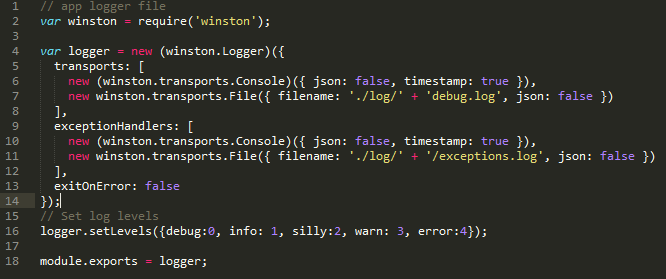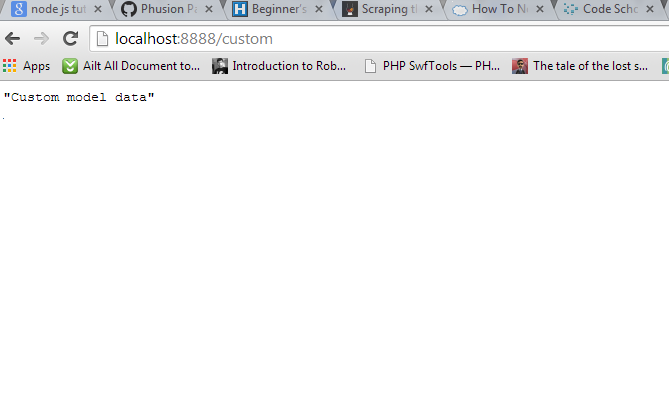xenops
v2.0.25
Published
New REST API, Real Time, MVC framework
Downloads
66
Maintainers
Readme
Xenops Framework
This framework is simple and including full featured components of REST API, MVC framework, database management, web socket management and view with static, dynamic web pages. It includes socket management system, data driven REST API, static and dynamic views, friendly URL routing, validation, logging, REST API functionality testing module etc. This framework architecture is service handler oriented one and user can easily develop simple to complex level API functionality. Data management module handles data models with validation and sanitization, models retrieves the data from database using correct node modules. It is especially good for building REST API, multi room chat, virtual class room, real time scalable dashboards, multiplayer games and website with static, dynamic view based web pages. It is an extensible framework, user can easily extend the framework and rewrite functionality and change it according to their own needs.
Framework structure is shown in fig.


Installation
// global install
$ npm install -g xenops Next we can use the commandline utility, type xenops in terminal and press enter, it will show how to use.
$ xenops
Please provide the app name. Usage - xenops [dirname] eg: xenops myappIf you want to generate an application with Xenops, you should first navigate to the folder using cd command, where we want to create app.
Create application using Xenops commandline :
$ xenops appname
Xenops sample Framework structure created in appname.Install dependencies:
$ cd appname && npm installRun application :
$ npm start Open the browser and type url :http://localhost:8888/ shows
Welcome to Xenops FrameworkFramework structure
The structure of the files in an application is very important.It will help us to expand the current application structure by adding more modules and make an good app.Before doing that one , we should clearly understand the basic structure and how to make simple api function using current app. We will separate core functions of our app into sensible and efficient file structure.
This framework contains some important modules,
- Configuration
- Routing
- Logging
- Data management
- Socket io programming
- Views management
- Template management
- Object Relational Mapping
- Client testing
Configuration
This is the main configuration file (config/config.js) that contains all configurations needed for the entire application to work. DB config, server config, app config, socket config etc.
Routing
Restify server based routing configuration implemented.The file routes/routes.js file exports the Router object that handles all the route to application framework.
Server
Node Restify server is used for framework development. server.js file is used to configure server, socket, and handlers.Once everything is configured correctly, you need to call initApp() function that will start application. There is one index file in the root folder and it is entry point of application and db connection, server initialisation start from here.This file will invoke the framework server and start application.
Just need to run node index.js (Development or production mode can set by using NODE_ENV)

and you can see that server is started.
Open the browser and type url :http://localhost:8888/
Gives : Welcome to Xenops Framework
Data management
This framework has separate directory structure for each file model, controller etc. Router routes the url to one function inside the controller. This framework structure contains controllers, models etc. Controller navigate through the application and handlers (functions) inside controller call the appropriate model and returns the data. Data is taken from models, models retrieves the data from database, for different database we have to use different node database modules. Here we have used the sql server node database module.
Socket io programming
Socket io connection established through the same port used for api development. We have modularise the code to controller and model.There is no view present in this structured Framework.Here i am trying to explain code features of socket io programming and cool feature technology named web Real Time communication through code samples.
Node uses an event-driven, Non blocking I/O programming model and javascript is event driven language.One of the main feature of node js is event module, and EventEmitter class.Here i am not going to explain full server side code to implement multiple room real time communication. But I beleive that you will get a basic boilerplate for creating a multiple realtime communication.
In this socket io module implemented in socket controller, socket io configuration settings for the production and development are given.
 In the socket io programming socket has to listen for many events. We have created one custom event class to control socket events.
Socket Event listeners are added in controllers.
In the socket io programming socket has to listen for many events. We have created one custom event class to control socket events.
Socket Event listeners are added in controllers.
 Custom socket event class will handle all events and added in controller.
Custom socket event class will handle all events and added in controller.
// Event emitter Handler Obj
var socketEventEmit = require('../events/socketEventEmitter'); 
Views management
We have already mentioned that this framework is REST API based one and there is no view present in it. But in future we are looking for common framework for web based and REST API. For this one, we have started static and dynamic html page rendering using current framework.
// Custom controller routes
this.server.get('/staticview', this.controllers.custom.staticView);
this.server.get('/dynamicview', this.controllers.custom.dynamicView); Static and dynamic page render handlers.

Template management
EJS is a very popular opensource javascript template library and used in this framework.
How to use template in Framework
Add one index.ejs file in views folder.
<h1>Fingent Technology Solutions</h1>
<% if (data.length) { %>
<ul>
<% data.forEach(function(name) { %>
<li><strong><%= name %></strong></li>
<% }) %>
</ul>
<% } %>Add new url route to routes.js
this.server.get('/template', this.controllers.custom.templateView); template code for controller
CustomController.prototype.templateView = function(req, res, next) {
// Read it asynchronus mode
fs.readFile(constant.APP_PATH + '/views/index.ejs', 'UTF-8', function(err, templateStr){
if (err)
res.end(''+ err);
else {
var returnStr = ejs.render(templateStr, {
data: ['Fingent', 'Xenops', 'Framework']
});
res.writeHead(200, {'Content-Type': 'text/html'});
res.end(returnStr);
}
});
return next();
};Open the browser and type -> http://localhost:8888/template shows

Object Relational Mapping(ORM)
This is node js object relational mapping module named orm node module. The key feature of ORM is the mapping it uses to bind an object to its data in the database. ORM has the benefit of allowing you to more easily support more database engines. Currently it supports following DBMS
- MySQL & MariaDB
- PostgreSQL
- Amazon Redshift
- SQLite
- MongoDB (beta)
It has so many features
- Create Models, sync, drop, bulk create, get, find, remove, count, aggregated functions
- Create Model associations, find, check, create and remove
- Define custom validations (several builtin validations, check instance properties before saving)
Usage example
Add new url to routes.js
this.server.get('/getcustomers', this.controllers.custom.getAllCustomers); A Model is an abstraction over one or more database tables. Models support associations. The name of the model is assumed to match the table name. Create model file customerModel.js and add code.
// Define customer model
module.exports = function(db){
var Customer = db.define('customer', {
name : String,
email: String
}, {
methods: {
getName: function(){
return this.name;
},
getEmail: function(){
return this.email;
}
}
});
return Customer;
};customer is the table name and name, email are fields.
Drop this bits of code in /controllers/customController.js
CustomController.prototype.getAllCustomers = function(req, res, next){
res.writeHead(200, {'Content-Type': 'application/json'});
// ORM database connected
if (ormDb) {
var customerModel = require('../models/customerModel')(ormDb);
// To get all customers, {} for first customer {id: 1}
customerModel.find({}, function(err, customers){
if (err) {
console.log('DB Error ='+ err);
res.end(JSON.stringify(err));
return ;
}
// Print Collection of customer object
res.end(JSON.stringify(customers));
})
} else {
res.end('No database connection.');
}
return next();
};Open the browser and type -> http://localhost:8888/getcustomers
[{"name":"John Luka","email":"[email protected]","id":1},{"name":"Maria","email":"[email protected]","id":2}]results is the mysql table customer total records displayed as json.
Data handling in CRUD operations
Here we have already implemented a CRUD operation api functionalities using the current api framework.It includes user controller, model, routes etc.
Logging
In the current framework we are using winston log module.We can easily log the the info, error, warn and debug using this logger module.

this file is stored in utils/logger.js file.In the application we can use like,
// Log information
logger.info('Application server started. ');Two log files are created inside log folder for debug and exception log.
Client testing
This module is very important one and it can be used for REST API functional testing. Here is one html and js file, html file is used for socket io connection testing and js file one is used for testing

How to use this one ?
var client = require('./testClient/client');
// call client
client.clientConnect();
client.getUsers();Will output the results in console.
Create a REST api simple function using our framework
We present here a demo of single api function development using our own framework. Let’s begin.
Create your own custom controller
create /controllers/customController.js file and update the file with above code and save it.

Create custom model

Drop this bits of code in models/customModel.js.
Add custom controller to server.js


Update the server.js with code shown in above. Initialise service handlers with new custom controller object. Currently we are storing our action objects in service handlers object.
Add Url Routing
Edit routes\routes.js and update it.

Now everything is completed and the new REST API function developed using our own new structured framework. It is very simple.
Run the server steps
Go to application folder -> cd appfolder
Start node server by typing - > node index.js
Open the browser and type -> http://localhost:8888/custom

It is working fine. The above mentioned example is simple one. For database related method, you can check userModel.js file

Here we are using the sql server database and mssql node module included here and it is seperated from ORM module.
Based on the code you can get an idea of how to use different database engines inside our framework.
Moving forward
In the future we want our framework to include cool features like
- Test framework addition
- Secure api development
